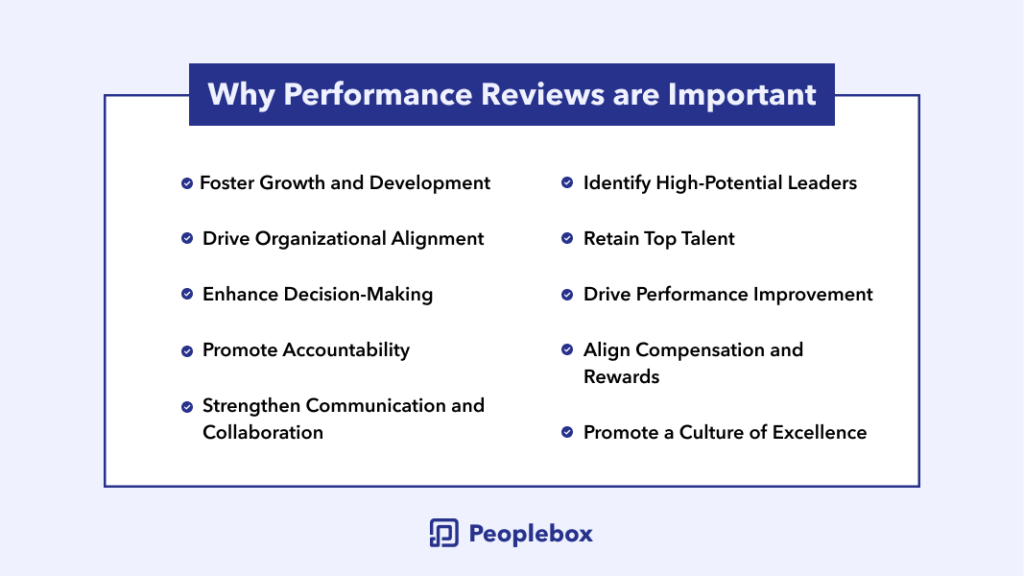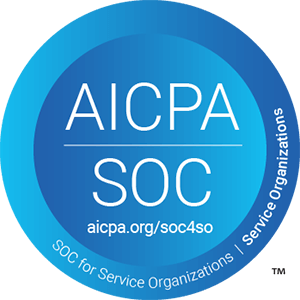Performance reviews aren’t just hard for employees. Managers struggle too.
Already organizations are navigating through challenging economic times that impact performance evaluations and remuneration cycles. During such circumstances, managers must change their approach to evaluate employee performances.
To unlock the true potential of every team member, managers must step up their game and overcome the regular performance review cycles. They need to tap into employee psychology to understand what inspires them to succeed at their jobs or current roadblocks that hampers their progress.
If you wish to build a better evaluation process to ensure employees receive what they deserve, you’ve come to the right place. This piece helps you deep dive into performance review in general, its benefits, and importance along with a set of 20 powerful performance review questions.
So, get ready to unlock fresh insights, inspire personal and professional development, and cultivate a culture of continuous improvement with us.
What is a Performance Review?
Performance reviews, an essential component of professional growth, provide a structured framework for evaluating an employee’s performance, progress, and contributions.
According to Western Michigan University, organizations prioritizing regular feedback and performance assessments witness a significant boost in employee engagement, resulting in notable productivity gains of up to 5-20%.
Performance reviews serve as a strategic tool to identify and leverage their unique strengths. Managers can optimize performance and drive job satisfaction by aligning tasks with their strategic planning, decision-making, and team leadership expertise.
Moreover, adopting agile check-ins and real-time feedback loops has become the norm, with an impressive hike in the tech companies embracing these practices.
Top 10 Reasons Why Performance Reviews are Important
We’ve gathered so far that performance reviews offer a formal platform for recognition, growth, and professional development. They facilitate continuous improvement and success in the fast-paced world of executive leadership.
This in itself is a good reason to understand why performance reviews are important. However, we’ve listed the top 10 reasons that emphasize its need further in any organization.

1. Foster Growth and Development
Performance reviews allow managers to provide employees valuable feedback and guidance.
By identifying areas of strength and improvement, managers can support employees in enhancing their leadership skills and professional growth. This focus on development ensures that employees have the necessary competencies to excel in their roles.
2. Drive Organizational Alignment
Employee performance review questions align organizational objectives with the organization’s overall strategic direction.
By evaluating performance against key performance indicators and goals, managers ensure that employees’ efforts align with the company’s mission, vision, and values. This alignment helps to steer the organization toward its desired outcomes.
3. Enhance Decision-Making
Employee performance reviews enable managers to engage in meaningful discussions with employees about their decision-making processes and outcomes.
Constructive feedback and evaluation help employees refine their judgment and enhance their ability to make informed decisions that drive business success. This process leads to better decision-making throughout the organization.
4. Promote Accountability
Performance reviews hold employees accountable for their actions, decisions, and organizational impact.
By evaluating performance and discussing accountability, managers motivate employees to take ownership of their responsibilities and strive for excellence. This fosters a culture of accountability and responsibility within the organization.
5. Strengthen Communication and Collaboration
Performance reviews provide a dedicated platform for open and honest communication between managers and employees.
Managers foster better collaboration and alignment across different teams and departments by discussing challenges, accomplishments, and goals. This improved communication enhances teamwork and overall organizational effectiveness.
6. Identify High-Potential Leaders
Performance reviews help managers identify employees with high potential for future leadership roles within the organization.
Managers can cultivate a talent pipeline and develop succession plans for key positions by assessing performance, competencies, and growth aspirations. This strategic approach ensures a strong leadership bench for the organization’s long-term success.
7. Retain Top Talent
Performance reviews play a critical role in talent retention.
By recognizing and appreciating employees’ contributions, managers enhance job satisfaction, boost morale, and increase the likelihood of retaining top-performing executives. Regular feedback and acknowledgment of their achievements demonstrate the organization’s commitment to their professional growth and success.
8. Drive Performance Improvement
Performance reviews highlight areas where executives may need additional support or resources to improve their performance.
Managers foster continuous improvement by addressing these gaps and providing targeted development opportunities. This approach ensures employees have the necessary tools and support to overcome challenges and drive results.
9. Align Compensation and Rewards
Performance reviews inform compensation, bonuses, and employee rewards decisions.
By evaluating performance, managers ensure that compensation is tied to individual contributions and aligns with the overall performance of the employees and the organization. This alignment reinforces a fair and transparent reward system.
10. Promote a Culture of Excellence
Performance reviews contribute to establishing a culture of excellence within the organization.
By emphasizing the importance of performance, accountability, and continuous improvement, managers set the tone for excellence. Through their role modeling, managers inspire their teams to strive for excellence in their work, creating a positive and high-performing organizational culture.
Importance of Asking the Right Questions
Asking the right annual reviews questions is essential to derive maximum value from these conversations. The right questions:
Foster Reflection
Thought-provoking questions prompt employees to reflect on their achievements, challenges, and areas for growth. This introspection helps them gain valuable insights and set clear objectives for improvement.
Enhance Communication
Well-crafted questions encourage open and honest communication between managers and employees. They create a safe space for feedback exchange, idea sharing, and collaborative problem-solving.
Drive Performance Improvement
The right questions enable managers to identify performance gaps, provide targeted feedback, and develop actionable improvement plans. This, in turn, drives individual and organizational growth.
Build a seamless performance
review system your employees
love!
Top 20 Performance Review Questions You Should Ask
By conducting effective performance reviews and asking the right employee evaluation questions during these reviews, managers can gain valuable insights, drive improvement, and foster a culture of excellence.
The top 20 employee review questions listed below have been carefully curated to support employees’ development, align objectives, promote accountability, and maximize organizational success.
Please note: The questions have been divided into categories to help build a framework to evaluate performance, identify areas for growth, and facilitate open and constructive dialogue between employees and their superiors.
Goal-setting and Expectations
1. What are the accomplishments from this quarter that you are most proud of?
Employees can highlight their contributions that significantly impacted the organization’s objectives by reflecting on the technical milestones achieved in the past quarter. This could include successful implementations of innovative software solutions resulting in improved system performance or the launch of new products that captured a substantial market share.
Acknowledging these achievements not only boosts employees’ confidence and motivation but also inspires them to excel further in their work, driving continued success for the company.
2. Which goals did you achieve, and which ones did you fall short on?
Assessing goal achievement from a technical standpoint allows employees to identify areas for improvement and opportunities for growth.
It is important to evaluate both quantitative and qualitative goals, such as meeting project deadlines, exceeding quality standards, or successfully resolving complex technical issues.
By analyzing the challenges that hinder goal attainment, employees can gain valuable insights and devise strategies to overcome them in the future. This data-driven approach fosters continuous improvement, ensuring that future goals are realistic, attainable, and aligned with the organization’s objectives.
3. What drives your motivation to get your job done?
Understanding employees’ motivators is essential for creating an environment that nurtures their innate drive and enhances performance.
Factors such as the opportunity to tackle complex technical problems, engage in cutting-edge research, or contribute to groundbreaking innovations can fuel motivation.
As a result, organizations can enhance job satisfaction, boost productivity, and retain top technical talent by aligning tasks with employees’ core interests and providing them with challenging yet fulfilling opportunities.
4. How can I enhance your job satisfaction and make it more enjoyable?
This question demonstrates a commitment to employee well-being and fosters a positive work experience, especially in technical roles.
To optimize job satisfaction, addressing technical aspects that contribute to employees’ happiness and fulfillment is essential. This could involve providing access to the latest tools and technologies, promoting professional development opportunities, and fostering a collaborative work environment that encourages knowledge sharing among technical teams.
In addition, recognizing and rewarding technical excellence through recognition programs or opportunities to showcase their work can also significantly contribute to job satisfaction in technical roles.
5. What working conditions do you prefer to be the most productive?
Recognizing the impact of working conditions on productivity, it is essential to optimize the work environment for technical professionals. This may include providing access to state-of-the-art equipment, ensuring a quiet and focused work environment, or offering flexible work arrangements that allow employees to manage their time and energy better.
Understanding and accommodating these preferences can significantly enhance productivity and contribute to the overall success of technical teams.
Current Role
6. What do you consider to be your strengths? In what ways do they assist you in completing your work?
Identifying strengths specific to an employee’s current role is crucial for leveraging their unique abilities and enhancing performance.
Strengths include expertise in programming languages, problem-solving skills, and an aptitude for data analysis.
By understanding how these strengths contribute to their work, managers can assign tasks that align with their expertise, leading to greater efficiency and job satisfaction. Leveraging employees’ strengths ensures they can significantly impact and succeed in their roles.
7. In what ways can we make better use of your skills and abilities to improve performance?
This question aims to uncover untapped potential within employees and explore opportunities for growth and optimization. It can involve assigning complex projects that allow employees to apply their specialized skills, providing opportunities for cross-functional collaboration, or encouraging knowledge sharing to leverage their expertise across the organization.
As a result, managers can unlock their full potential and drive outstanding performance by capitalizing on employees’ skills and abilities. This not only benefits the individual employee but also enhances the overall productivity and effectiveness of the team.
8. Are there any challenges or obstacles you currently face, and how can I help you overcome them?
Understanding employees’ challenges in their current roles is essential for effective support. These challenges may involve resource limitations, technical roadblocks, or a lack of specialized training.
By proactively addressing these obstacles through resource allocation, providing necessary training opportunities, or offering mentorship, managers can create an environment that empowers employees to overcome challenges and achieve success. In addition, by removing or mitigating these obstacles, employees can perform at their best and contribute significantly to the organization’s success.
Future
9. Which goals/deliverables were you least satisfied with? What was the reason for this dissatisfaction? How can you approach them differently in the future?
Reflecting on unsatisfactory goals or deliverables provides an opportunity for growth and improvement.
This may involve projects where deadlines were missed, quality standards needed to be met, or technical difficulties were encountered. By analyzing the reasons for dissatisfaction, such as inadequate planning or insufficient resources, employees can develop strategies to overcome them and approach similar goals differently in the future.
This reflection fosters continuous improvement and ensures more successful outcomes.
10. What are the 2-3 key areas you will prioritize in the next quarter to foster your growth and development?
Encouraging employees to set specific growth goals demonstrates a commitment to their professional advancement.
For example, these goals may include mastering a new programming language, expanding knowledge of emerging technologies, or acquiring additional certifications.
Managers can support employees’ growth and development by providing resources, mentorship, or training opportunities aligned with these goals, enabling them to excel in their current roles and prepare for future challenges.
11. In what ways can I support you better to accomplish your goals?
This question fosters a collaborative approach, allowing managers to identify ways to provide employees with the necessary resources and support to achieve their goals. This may involve access to specialized tools and technologies, training programs tailored to their needs, or facilitating collaborations with subject matter experts.
By actively supporting employees’ goals, managers can enhance their performance, job satisfaction, and career progression, ultimately benefiting both the employee and the organization.
12. What are your long-term career goals, and how can I help you achieve them within our organization?
Aligning an employee’s long-term aspirations with organizational opportunities promotes loyalty, retention, and career growth.
Long-term career goals may involve assuming leadership positions, becoming subject matter experts, or contributing to strategic initiatives.
By creating personalized development plans, providing mentorship, or offering growth opportunities within the organization, managers can facilitate employees’ career progression while ensuring their continued contribution to the organization’s success. This alignment ensures a win-win scenario for both the employee and the organization. Here is a detailed article on how to develop individual development with free templates for your organization.
13. Are there any training or development opportunities that you are interested in pursuing?
Identifying employees’ training and development interests demonstrates a commitment to their professional growth and skill enhancement. This may involve attending industry conferences, participating in specialized training programs, or pursuing certifications in emerging technologies.
By supporting and investing in these opportunities, managers can cultivate a culture of continuous learning, increase employee engagement, and ensure the organization stays at the forefront of industry trends. Investing in employee development is vital for maintaining a competitive edge in the rapidly evolving technology landscape.
Feedback, Manager-Employee Relationship
14. What feedback do you have for me in terms of how I can improve as your manager?
Encouraging employees to provide feedback enables managers to enhance their leadership skills and better support their team.
Feedback may involve providing more straightforward technical guidance, allocating resources more effectively, or promoting a culture of innovation and experimentation.
By actively seeking feedback and implementing necessary improvements, managers can foster a supportive and empowering work environment, ensuring the team’s technical success and growth.
15. How can we continue to build a strong working relationship that is based on trust, transparency, and open communication?
Strengthening the manager-employee relationship is crucial for creating a positive work environment and fostering collaboration and productivity. This can involve establishing regular feedback sessions to discuss technical progress, encouraging open dialogue on challenges and ideas, or providing opportunities for skill-sharing and mentorship.
By prioritizing trust, transparency, and open communication, managers can foster a culture of teamwork and mutual growth, ultimately enhancing technical outcomes and employee satisfaction.
16. Are there any concerns you have about giving me feedback? If so, how can I address them to make it easier for you to provide feedback?
Addressing potential barriers to feedback empowers employees to express their thoughts openly and contribute to a culture of continuous improvement.
Employees may hesitate to provide feedback due to concerns about their technical expertise being undervalued or needing to be fully understood.
Managers can address these concerns by actively listening, understanding technical challenges, and fostering an environment where all feedback is valued and acted upon. This approach ensures a safe and supportive environment for providing constructive feedback.
17. How do you like to receive feedback and recognition for your work?
Understanding an employee’s preferred feedback and recognition style ensures that it is delivered in a way that is most meaningful to them.
For example, employees may appreciate specific feedback on their technical achievements, such as code reviews or recognition for solving complex technical problems.
Managers can effectively motivate and engage their teams by tailoring feedback and recognition to employees’ preferences, promoting continuous growth and technical excellence.
18. What two to three things could I do differently to manage you better?
This question demonstrates managers’ willingness to adapt and improve their management style to support employee success.
For example, employees may appreciate more transparent communication on project expectations, more regular check-ins to address technical challenges, or greater autonomy in decision-making.
By incorporating these suggestions into their management approach, managers can create a supportive and empowering environment for their team, enhancing technical performance and job satisfaction.
19. What do I do that is most helpful or least helpful when it comes to completing your work?
Understanding the impact of a manager’s actions on employee productivity enables better collaboration and performance alignment. Actions that may be helpful include providing clear technical guidance, facilitating access to necessary resources, or advocating for the team’s technical needs.
Conversely, actions that may be least helpful can include micromanagement, lack of technical support, or insufficient recognition of technical accomplishments. By actively seeking this feedback, managers can optimize their management approach and ensure their team’s success in technical endeavors.
20. How can we improve our working relationship?
This final question emphasizes the importance of continuous improvement in the manager-employee relationship and fosters a collaborative and positive work environment.
Improving the working relationship may involve establishing regular technical check-ins, facilitating cross-functional collaboration, or creating knowledge-sharing and learning opportunities. By addressing any existing gaps and nurturing a strong working relationship, managers can foster a culture of trust, collaboration, and mutual growth, enhancing technical outcomes and employee satisfaction.
By addressing these questions with a focus on the technical aspects, managers can strengthen their leadership skills, build a supportive work environment, and optimize the technical success of their team. In addition, this approach fosters employee engagement, growth, and collaboration, ultimately benefiting both the employees and the organization.
Conclusion
Asking the right questions during performance reviews is crucial for engaging employees, fostering growth, and aligning organizational objectives. By incorporating the top 20 performance review questions discussed in this article, you can enhance the effectiveness of performance reviews and drive positive outcomes for both employees and the organization.
To streamline performance review processes and facilitate meaningful conversations, consider utilizing Peoplebox, a performance management software. Peoplebox offers goal tracking, real-time feedback, and performance analytics features, enabling seamless performance management and promoting employee development.
Remember, performance reviews are not just about evaluating past performance; they are opportunities for growth, development, and building strong relationships with employees. With the right questions and a commitment to ongoing improvement, organizations can unlock their talent’s full potential and drive long-term success.







